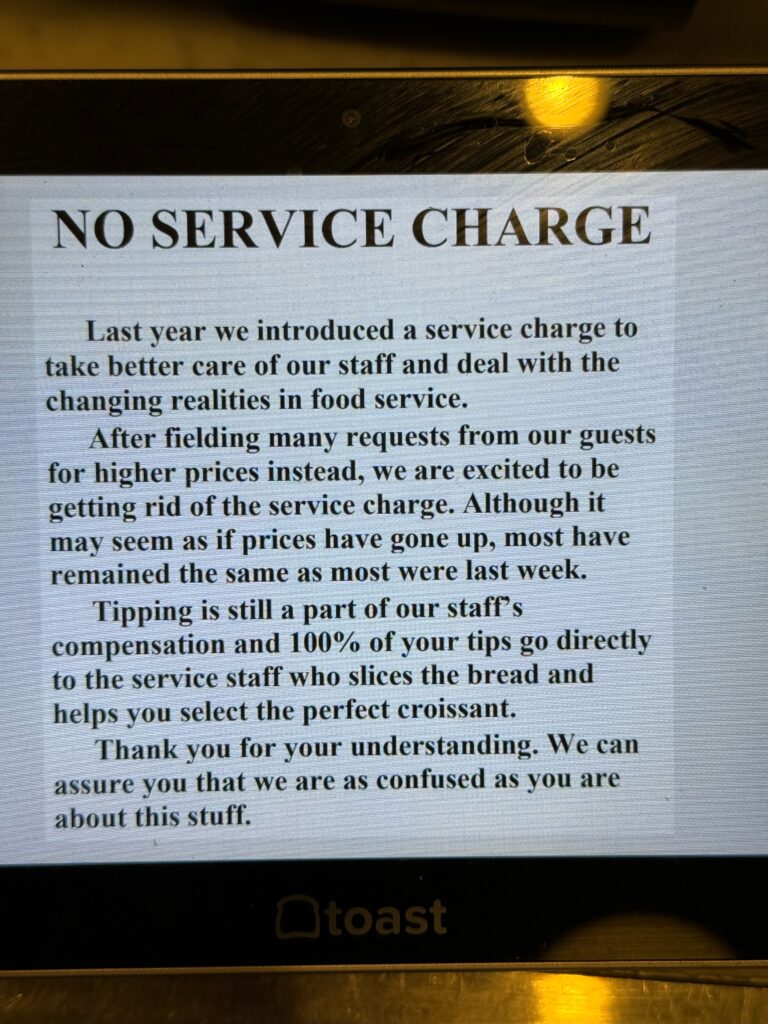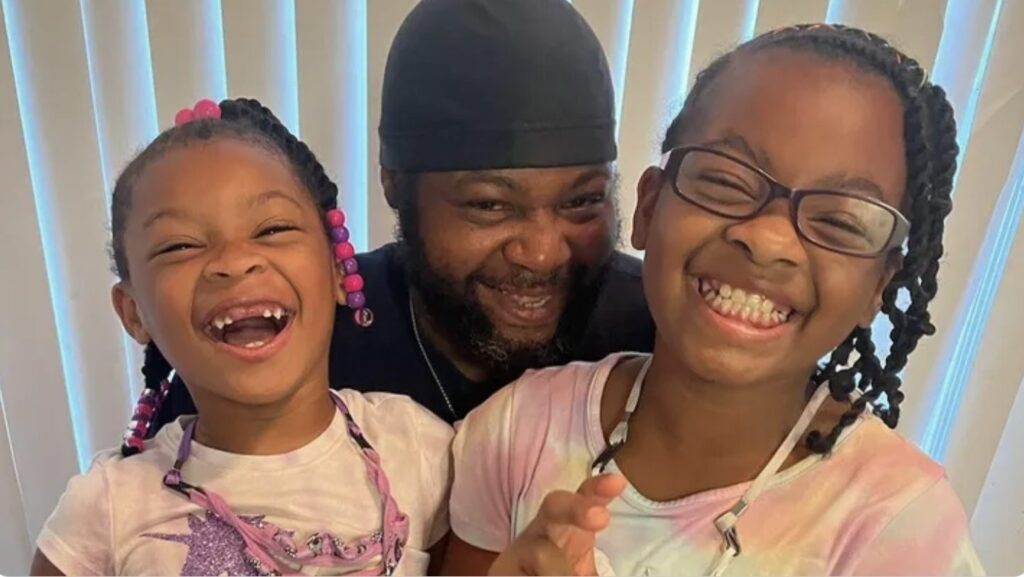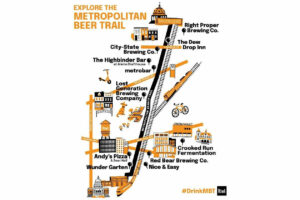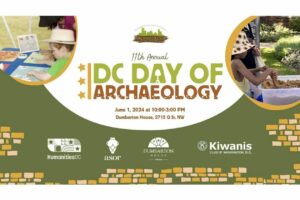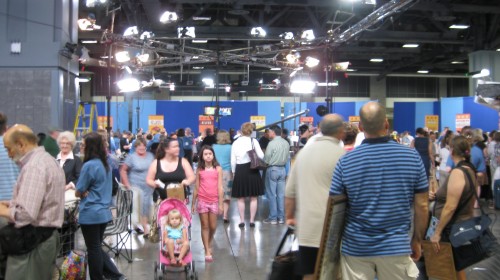
The sidewalk is dotted with people pushing carts full of furniture, carrying dusty suitcases, or gingerly walking with paintings slung under their arms. I’m sitting at the corner of 9th and Massachusetts on the granite blocks outside the Convention Center. Sitting to my immediate left is a rusted model of a 1920s bus inside a circle of people I’m assuming contains its owner. To my right is a duo of women babysitting a largish discolored piece of wood wrapped in a leather purse. They are all here for the final leg of the 2010 season of the Antiques Roadshow, the popular PBS program that’s billed as “part adventure, part history lesson, part treasure hunt,” which came to the Washington Convention Center on August 21.
I head inside, and am greeted by Mary Stewart, a volunteer for WETA, and my media escort for the day. Security is relatively tight and I am not permitted to go anywhere without her. We chat for a bit about the show, and I learn some interesting factoids (it’s highest rated prime-time PBS series, appraisers see over 1,400 objects an hour) as we ride the elevator down into the lower level, a sprawling, spartan hangar of a room. From the escalator, I see a line snaking its way back toward us. A projector silently plays a faded episode of the series on the back wall of the gargantuan room. The episode is explaining the finer points of a 19th century kewpie doll to no one in particular. The attendees in the long line are waiting to be triaged, which means their items are reviewed by type and then told to stand in line at one of the various booths. Mary said that attendees typically wait three hours to have their items appraised, but that wait depends on the items. Paintings and jewelry have the longest lines. Sports memorabilia, on the other hand, is almost deserted.
The booths themselves form a giant ring facing inward, and attendees mill about under the studio lights in the center. One man carelessly drags a small, dark curio chest on a rug behind him. I don’t have the heart to ask if he’s had it appraised yet.
Continues after the jump.
The blue backgrounds give the booths the studied primness of a dog show, except instead of Airedales and beagles people bring curios and lamps. According to Mary, most antiques people bring are inherited, or gifts. Watching thousands of people cart around some of their most prized possessions is a humbling experience. I already feel like I know too much about them.
I stop at the Feedback Booth. This is an area where attendees can record their thoughts after their items have been appraised. These seconds-long spots are then edited into the end credits of the show. One man, Joel (the producers of the show have asked not to mention last names or hometowns) came all the way from New Jersey to have his grandmother’s carved lamp appraised. Like nearly every attendee, he had hoped it would be worth thousands of dollars. As it turned out, it was only worth $800. “I told my wife we’d buy a summer home, but we can’t rent a beach house with that,” he jokes. That prospect was actually liberating to him, he adds. Had the lamp been truly valuable, the decision to sell it or not would have made him “sick,” he says.
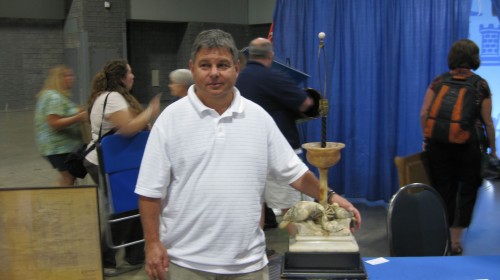
Joel
Most people present, like Joel, are fans of the show and look genuinely happy to be here. And yet I feel vaguely commoditized on behalf of all of the attendees. There’s a harried, brusque feel on the part of some volunteers and production staff that seems at odds with the popular image of the series. I didn’t see a single chair besides those that the attendees have brought with them to be appraised. Mary told me that because of liability issues, volunteers and production staff are not permitted to assist attendees with their items in any way. Everyone who attends must be physically capable of carrying his or her own items. No dollies or carts are provided. I came away with the feeling that while the Antiques Roadshow is a fun experience, it was not worth quite as much as I had initially appraised.
Recent Stories
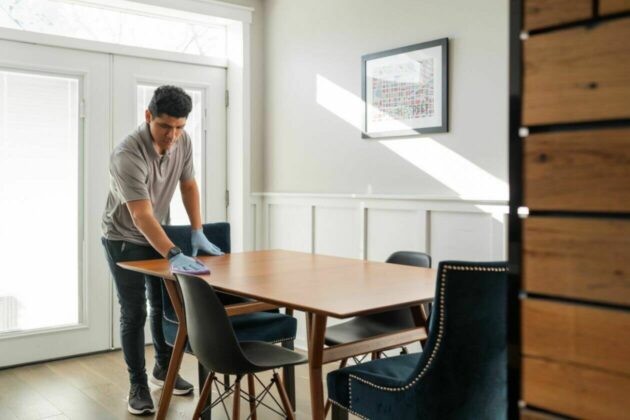
For many remote workers, a messy home is distracting.
You’re getting pulled into meetings, and your unread emails keep ticking up. But you can’t focus because pet hair tumbleweeds keep floating across the floor, your desk has a fine layer of dust and you keep your video off in meetings so no one sees the chaos behind you.
It’s no secret a dirty home is distracting and even adds stress to your life. And who has the energy to clean after work? That’s why it’s smart to enlist the help of professionals, like Well-Paid Maids.

Unlock Peace of Mind for Your Family! Join our FREE Estate Planning Webinar for Parents.
🗓️ Date: April 25, 2024
🕗 Time: 8:00 p.m.
Metropolitan Beer Trail Passport
The Metropolitan Beer Trail free passport links 11 of Washington, DC’s most popular local craft breweries and bars. Starting on April 27 – December 31, 2024, Metropolitan Beer Trail passport holders will earn 100 points when checking in at the
DC Day of Archaeology Festival
The annual DC Day of Archaeology Festival gathers archaeologists from Washington, DC, Maryland, and Virginia together to talk about our local history and heritage. Talk to archaeologists in person and learn more about archaeological science and the past of our


